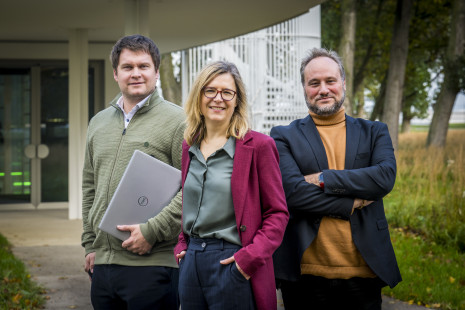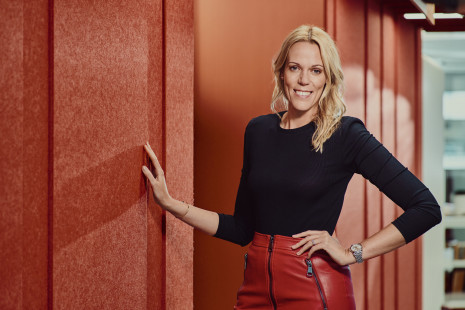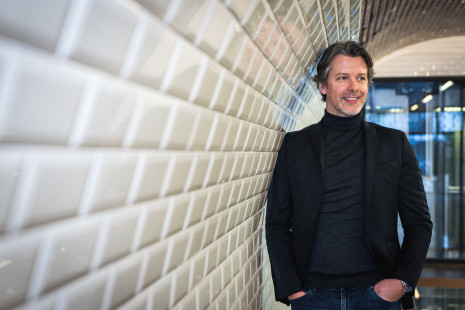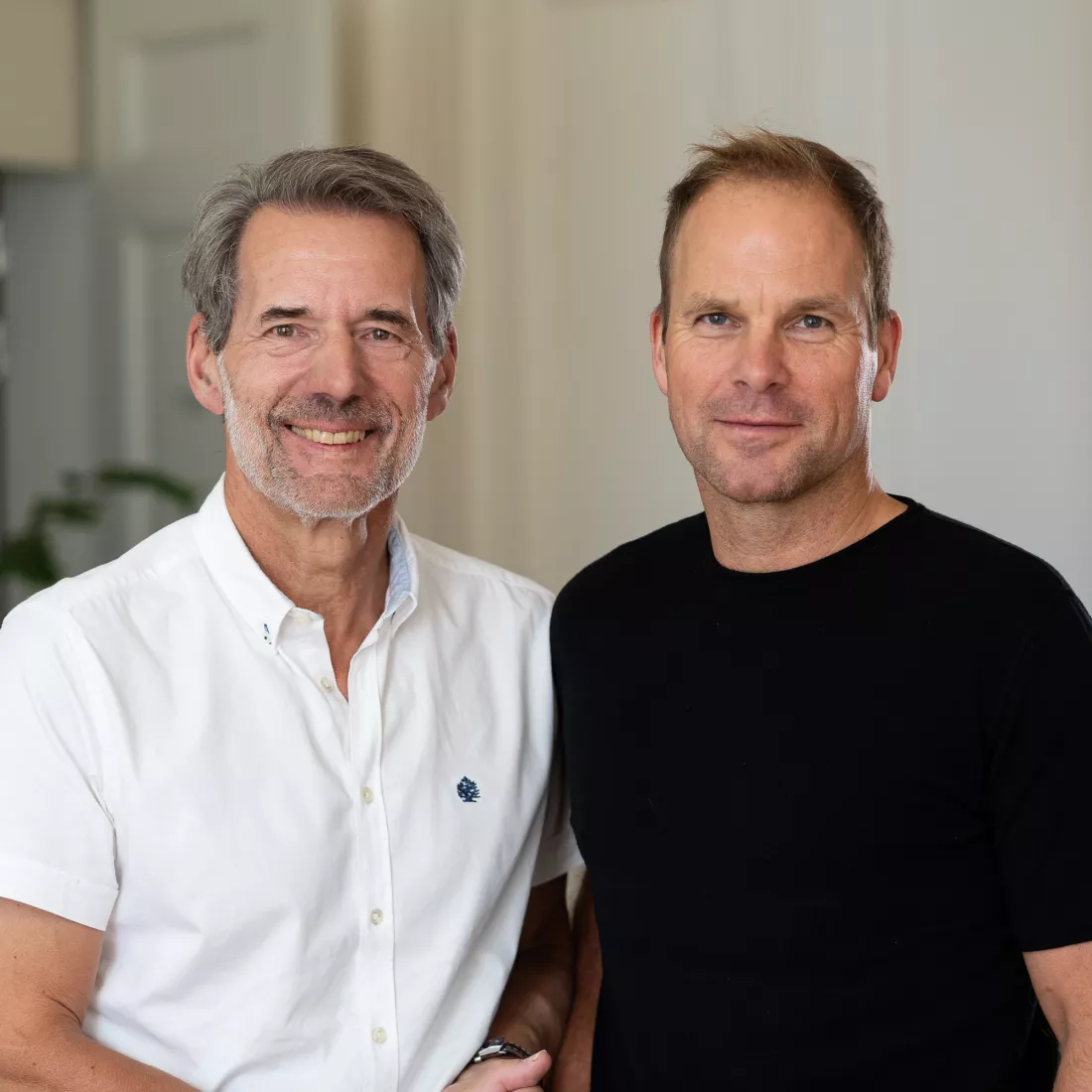Bert Haemels & Kristof Van Hoecke
SGS
Antwerp is the perfect hub for our innovation strategy, as all the technological, economic, and social trends are visible here.
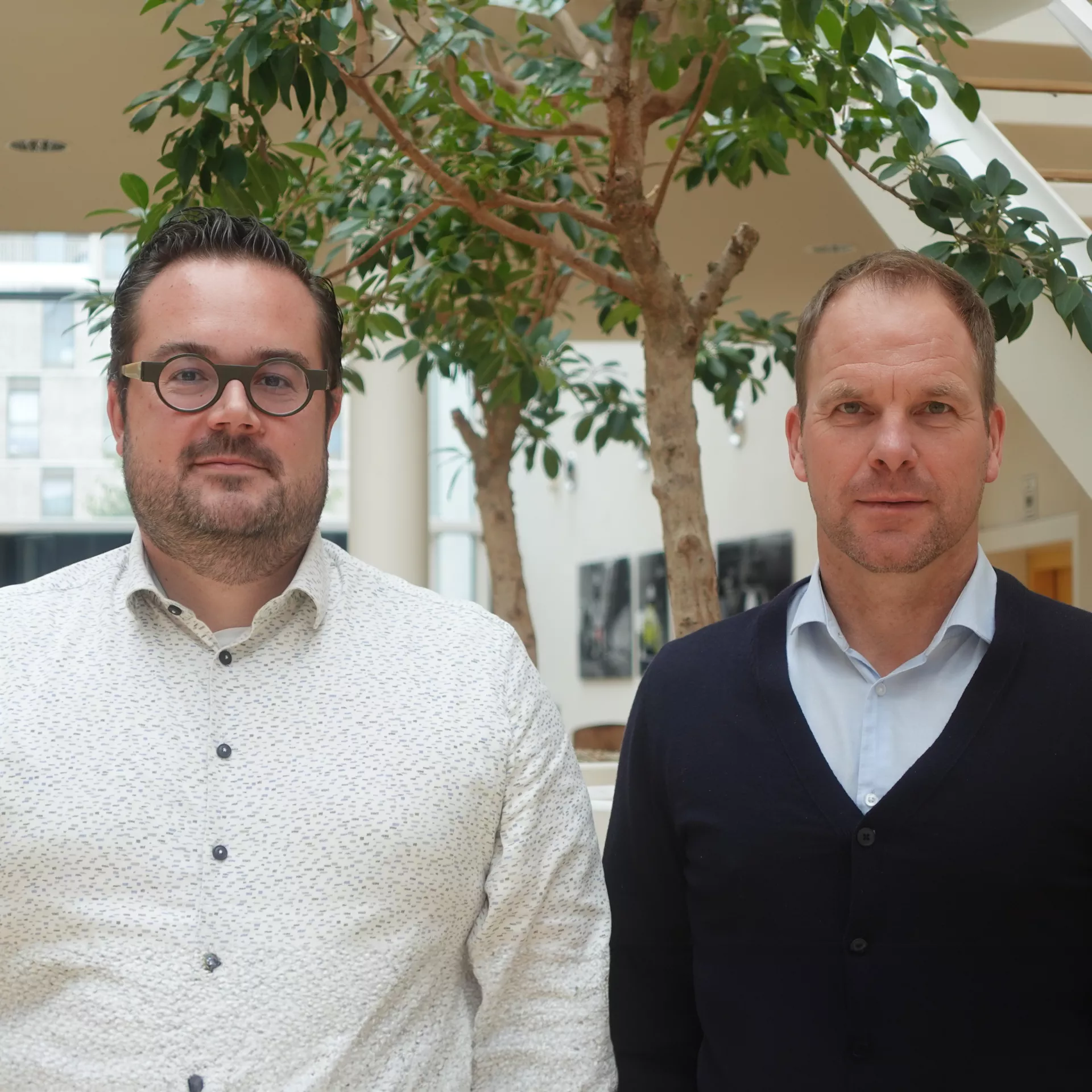
Bio
Name: Bert Haemels
Job title: Digital Technology & Innovation Manager Benelux
Age: 39
Passionate about: Connecting people in a collaboration so that they excel
Ambition: To drive innovation-driven entrepreneurship at SGS’s core
What clears my head: Being on the water
Which podcast can I recommend: The Culturedge Podcast by Stephen Perkins
Name: Kristof Van Hoecke
Job title: Regional Digital Technology & Innovation Manager Europe
Age: 55.
Passionate about: Developing a vision on how innovation and sustainability go hand in hand
Ambition: To align our company to today’s and tomorrow’s trends
What clears my head: Doing sports
Which podcast can I recommend: https://www.nexxworks.com/podcast
Hello Bert and Kristof. What exactly do you do at SGS?
Kristof: “As entrepreneurs within the company, we seek out innovation & digitalisation opportunities. We encourage our employees to think outside the box. We embrace a bottom-up strategy, where ideas originate from the business divisions. We capture these ideas, evaluate them, and initiate projects. It’s essential to pursue only those projects that are viable and economically feasible. You could say we are the marketeers of innovation within SGS.”
Bert: “There’s a corporate innovation strategy that aids us in evaluating ideas. We innovate to enhance our processes, create new business avenues, and anticipate future technological developments.”
How do you stimulate innovation in an organisation with 4,000 employees?
Kristof: “We collaborate with around 60 ambassadors across all departments within SGS Benelux. These digital natives serve as our ‘tentacles’, scoping out innovation ideas within their field of business for us to elaborate on and, in turn, helping us fine-tune inspirational workshops. Our focus lies on addressing specific needs. For instance, if a lab worker has repetitive tasks they wish to automate, or if a client prefers real-time results over PDFs, we prioritise these ‘must-haves’ over ‘nice-to-haves’. If an idea doesn’t meet a pressing need, we move away from it.”
Given the wide range of SGS’s fields, how do you stay on top of emerging trends, especially with the rise of AI and other technologies?
Bert: “It’s certainly a challenge, which is why we look beyond SGS to identify trends within specific markets, technologies, and competitors. Our decision to join The Beacon, Antwerp’s innovation hub, was strategic - it gives us direct access to start-ups and acts as a gateway to innovation.”
As tech scouts at The Beacon, what do you notice when meeting start-ups?
Kristof: “We find start-ups are often very passionate about their ideas but sometimes invest energy in ‘nice-to-have’ features. As tech scouts, we support them in refining their concepts to ensure they’re fully focused on ‘must-haves’ from day one. By brainstorming and connecting with start-ups, we keep them up to date with the needs of the industry. With this, they can better focus on developing the essential features of their concepts.”
How else do you ensure that innovation aligns with actual market needs?
Kristof: “We involve our customers early, checking regularly to ensure our projects align with market demands. This involvement provides valuable feedback and fosters customer commitment as they witness the project’s growth, resulting in a mutually beneficial relationship.”
The Beacon serves as a physical hub. How important is this for your work?
Bert: “It’s crucial. I believe I’ve spoken to about 75% of the members face-to-face. Sometimes, immediate collaboration opportunities arise; even if they don’t, building these connections is vital. Our presence at The Beacon allows for serendipitous collaborations down the line. We actively engage with others, network, and seek connections. Occasionally, our employees directly collaborate with members of The Beacon, which is fantastic. Currently, we are working with Infofarm on a project where we will apply AI for planning optimisation. We are working with ADLC on our large drone logistics project SAMPLIFLY, and there are ongoing discussions with other members regarding AI applications. We also have had a longstanding relationship with drone operator Skyebase, which has done numerous drone inspection assignments for us.”
Kristof: “The Beacon organises various events and trips, including a recent one that Bert attended in Hamburg. Their events are always informative yet intimate, fostering a cosy atmosphere where everyone feels comfortable engaging with one another, whether there’s an immediate connection or opportunity or not. That openness is very refreshing.”
What are your main focuses for the coming years?
Kristof: “Sustainability is at the forefront. We’ll continue to push ourselves to deliver innovative services and solutions that help our customers move their businesses forward. We’ll offer sector-specific expertise and compliance-driven solutions dedicated to helping organisations navigate the complexities of sustainability, such as biobased content validation of isolation products, PFAS testing, and measuring biodiversity. This is a burgeoning market for us. Balancing innovation with sustainability is essential. We’re considering using AI to optimise expert scheduling and leverage our extensive data to offer new services. For example, our global testing of fuels provides invaluable insights for automotive and energy companies.”
Why is SGS located in Antwerp, and how do you view the city as an innovation hub?
Bert: “Antwerp has been a cradle of innovation for centuries, and SGS has a long-standing presence here. The port is a significant source of activity, positioning our office as a vantage point for many of the services we offer. All the technological, economic, and social trends are evident in this region.”
Kristof: “To stay competitive and foster innovation, the local government should further invest in innovation communities like, for example, The Beacon, and further create platforms dedicated to addressing the challenges faced by our cities, ports, and industries.”
Thank you for this conversation!
